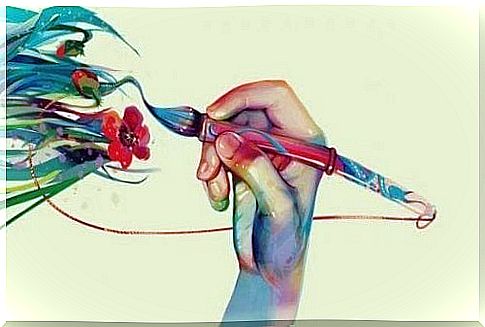Four Techniques To Regulate Emotions

All emotions arise for a specific reason and it is never a good idea to suppress them. However, it is also not a good idea to let them take over. That’s why there are techniques to regulate emotions that can help us deal with them.
Anger is an emotion that is difficult to control because of the energy it gives us. There are many people in the world who let their anger control them and do and say things that hurt others. Fear, too, can take over and prevent us from growing. Both emotions can affect our quality of life.
Therefore, it is important to know some techniques of regulating emotions that can help us better manage our emotions.
Four techniques to regulate emotions
1. Vipassana
Vipassana meditation is based on self-observation. It means seeing things as they are . For certain cultures in India, it is a means of developing “the art of living”. The technique mainly consists of taking the time to see yourself from a different perspective.
It goes like this:
- The idea is to go to a quiet place, close your eyes and take a deep breath. You have to pay close attention to the way the air enters and leaves your body.
- The next step is to scan every part of your body.
- It is ideal to do this for just a few minutes every day. It is a daily practice that helps develop self-control.

2. Virtual environments
The next of the techniques for regulating emotions that we will cover consists of using virtual or imaginary environments. This technique consists of virtually exposing yourself to various situations that make you feel particularly vulnerable. Then you need to evaluate these situations and the emotions you feel.
Certain psychologists and institutions are equipped with the necessary technology to digitally reproduce situations. However, this is not the only way to do it.
If you don’t have that technology at your disposal , here’s how to use your imagination :
- You can draw or describe some of those situations that you feel you have no control over with words.
- The idea is to identify tantalizing triggers or situations.
- Then you should try to understand the emotions they make you feel, why they arose and how to control them.
3. Art Therapy
Art therapy is much more than just a fad or trend. In fact, it has been around for a very long time. It consists of using different artistic channels as a means of expressing emotions and thus achieving an emotional balance.
This is one of the most effective techniques for regulating emotions as it encourages emotional expression through creative channels.
Emotions must first be conceived and explored in order to express them through writing, painting, sculpture or other forms of art. If practiced regularly, art therapy can help develop self-control.

4. Self-evaluation
A lack of control over emotions is often caused by a lack of self-knowledge and self-esteem. We feel stressed because we tend to ask too much of ourselves.
We also feel stressed because we punish ourselves for our mistakes, instead of focusing on the positive. This stress makes us more sensitive to certain things, such as criticism, indifference and demanding situations.
It’s a good idea to evaluate ourselves weekly or monthly. However, it is not about identifying the things we have failed to do in the last week or month.
The goal is to identify our successes and the reasons why we may need to congratulate ourselves. This simple exercise helps us get a better picture of ourselves. As a result, it also makes us emotionally smarter.

These techniques for regulating emotions are not magical solutions. However, we can begin to see changes in our lives if we start using them. They can help us learn to deal with our emotions and thereby improve our quality of life.









